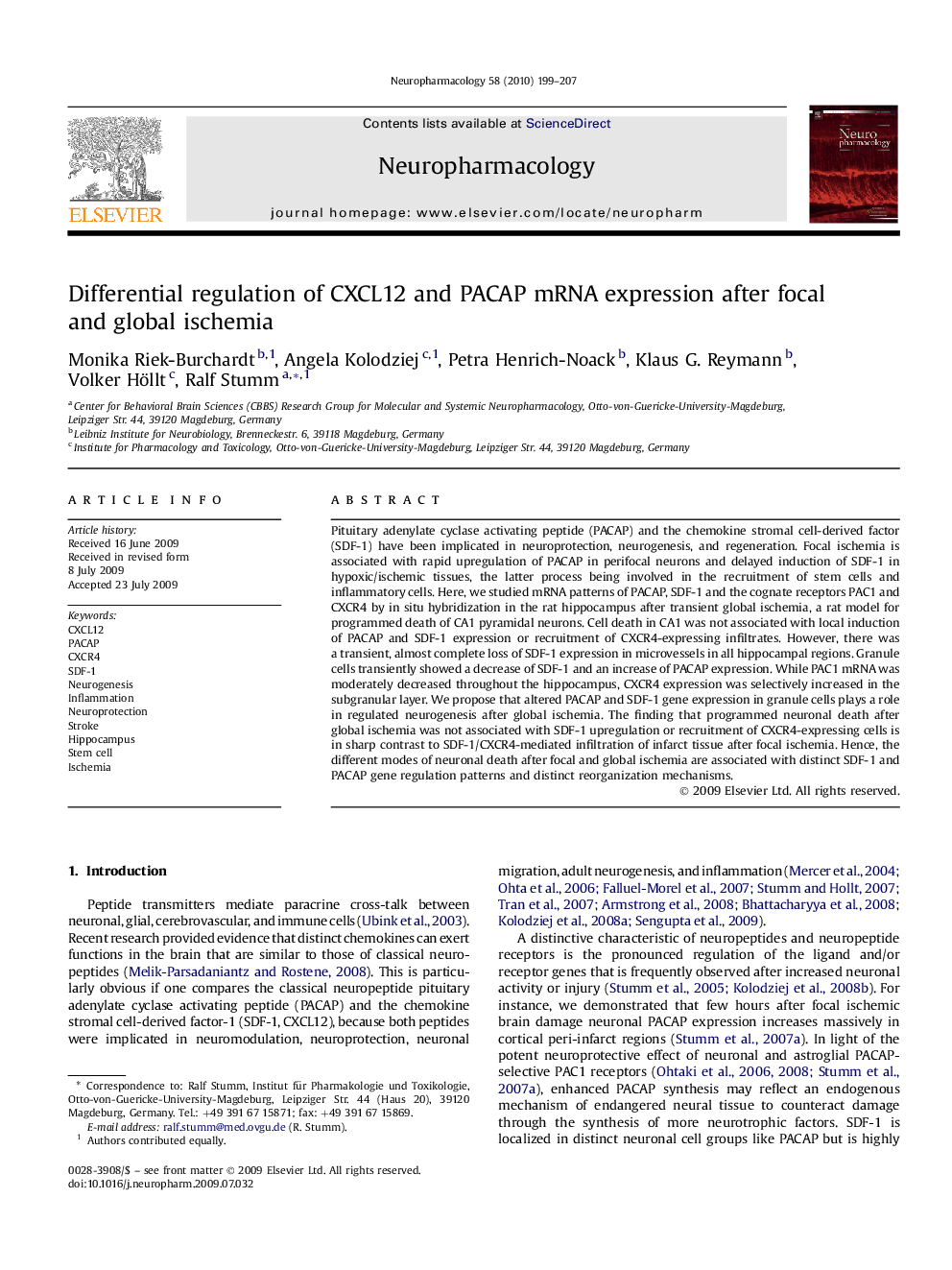| Article ID | Journal | Published Year | Pages | File Type |
|---|---|---|---|---|
| 2494187 | Neuropharmacology | 2010 | 9 Pages |
Pituitary adenylate cyclase activating peptide (PACAP) and the chemokine stromal cell-derived factor (SDF-1) have been implicated in neuroprotection, neurogenesis, and regeneration. Focal ischemia is associated with rapid upregulation of PACAP in perifocal neurons and delayed induction of SDF-1 in hypoxic/ischemic tissues, the latter process being involved in the recruitment of stem cells and inflammatory cells. Here, we studied mRNA patterns of PACAP, SDF-1 and the cognate receptors PAC1 and CXCR4 by in situ hybridization in the rat hippocampus after transient global ischemia, a rat model for programmed death of CA1 pyramidal neurons. Cell death in CA1 was not associated with local induction of PACAP and SDF-1 expression or recruitment of CXCR4-expressing infiltrates. However, there was a transient, almost complete loss of SDF-1 expression in microvessels in all hippocampal regions. Granule cells transiently showed a decrease of SDF-1 and an increase of PACAP expression. While PAC1 mRNA was moderately decreased throughout the hippocampus, CXCR4 expression was selectively increased in the subgranular layer. We propose that altered PACAP and SDF-1 gene expression in granule cells plays a role in regulated neurogenesis after global ischemia. The finding that programmed neuronal death after global ischemia was not associated with SDF-1 upregulation or recruitment of CXCR4-expressing cells is in sharp contrast to SDF-1/CXCR4-mediated infiltration of infarct tissue after focal ischemia. Hence, the different modes of neuronal death after focal and global ischemia are associated with distinct SDF-1 and PACAP gene regulation patterns and distinct reorganization mechanisms.
